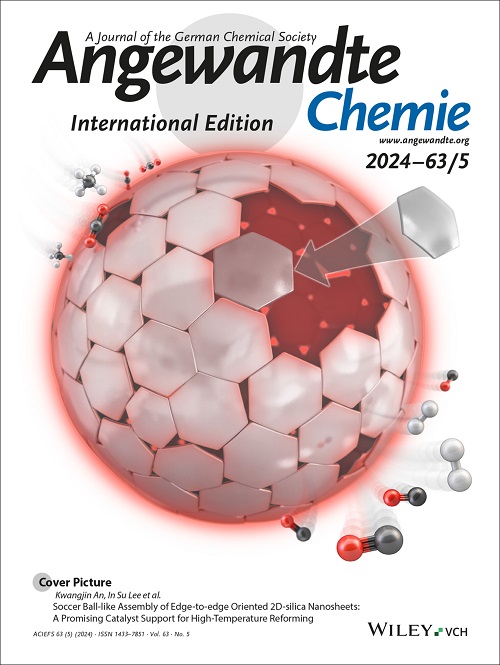Enhancing Ion Transport at Primary Interparticle Boundaries of Polycrystalline Lithium-Rich Oxide in All-Solid-State Batteries.
IF 16.1
1区 化学
Q1 CHEMISTRY, MULTIDISCIPLINARY
引用次数: 0
Abstract
Polycrystalline lithium-rich oxide (PLRO) is a promising high-capacity cathode for next-generation all-solid-state batteries (ASSBs). However, its full potential is hindered by sluggish Li+ transport at primary interparticle boundaries, mainly due to the limited flowability of inorganic solid-state electrolytes (SEs). Additionally, infiltrating conventional SEs into PLRO can lead to severe interfacial side reactions because of high melting points. Herein, we report a one-step, low-temperature (<200 °C) co-sintering process that simultaneously synthesizes the SE and infiltrates it into the primary interparticle boundaries of PLRO, creating an integrated composite cathode for ASSBs. This process forms a continuous Li+ transport network, enabling deep bulk activation of PLRO. Meanwhile, the co-sintering process modulates the energy bands of the antibonding transition metal 3d-O 2p and nonbonding O 2p at the surface, achieving greater orbital overlap to suppress oxygen release and mitigate interfacial phase transformation. As a result, the PLRO-based ASSBs exhibit an impressive discharge capacity of 271 mAh g-1 at 0.1C, 212 mAh g-1 at 0.5C, and retain 80.0% capacity after 150 cycles. This study highlights the importance of enhancing ion transport to maximize the performance of PLRO-based ASSBs, offering a practical solution for advancing energy storage technologies.增强全固态电池中多晶富锂氧化物初级粒子间边界离子输运。
多晶富锂氧化物(PLRO)是下一代全固态电池(assb)极具潜力的高容量阴极材料。然而,由于无机固态电解质(SEs)的流动性有限,初级颗粒间边界Li+输运缓慢,阻碍了其充分发挥潜力。此外,由于高熔点,将常规se渗透到PLRO中会导致严重的界面副反应。本文报道了一种低温(<200°C)的一步共烧结工艺,该工艺同时合成了SE并将其渗透到PLRO的初级颗粒间边界,为assb创造了一个集成的复合阴极。这个过程形成了一个连续的Li+传输网络,实现了PLRO的深度批量激活。同时,共烧结过程调节了反键过渡金属3d- o2p和非键过渡金属o2p在表面的能带,实现了更大的轨道重叠,抑制了氧的释放,减缓了界面相变。结果,基于plro的assb在0.1C时表现出令人印象深刻的放电容量为271 mAh g-1,在0.5C时为212 mAh g-1,并且在150次循环后保持80.0%的容量。该研究强调了增强离子输运以最大化基于plro的assb性能的重要性,为推进储能技术提供了实用的解决方案。
本文章由计算机程序翻译,如有差异,请以英文原文为准。
求助全文
约1分钟内获得全文
求助全文
来源期刊
CiteScore
26.60
自引率
6.60%
发文量
3549
审稿时长
1.5 months
期刊介绍:
Angewandte Chemie, a journal of the German Chemical Society (GDCh), maintains a leading position among scholarly journals in general chemistry with an impressive Impact Factor of 16.6 (2022 Journal Citation Reports, Clarivate, 2023). Published weekly in a reader-friendly format, it features new articles almost every day. Established in 1887, Angewandte Chemie is a prominent chemistry journal, offering a dynamic blend of Review-type articles, Highlights, Communications, and Research Articles on a weekly basis, making it unique in the field.

 求助内容:
求助内容: 应助结果提醒方式:
应助结果提醒方式:


